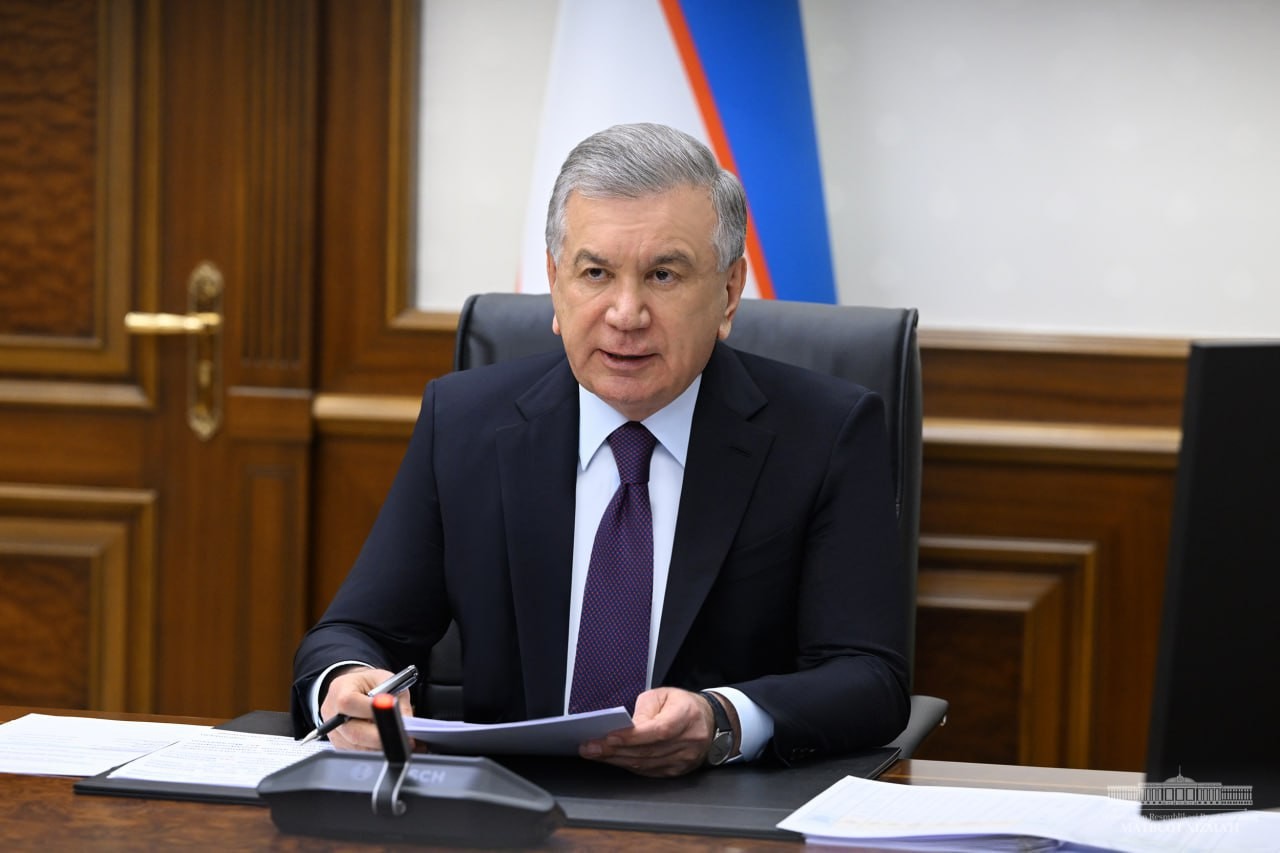
President Shavkat Mirziyoyev held a meeting on expanding the use of renewable energy sources
President Shavkat Mirziyoyev convened a meeting dedicated to the priority tasks for 2024 regarding the increased utilization of renewable energy sources.
According to the analysis, the potential of solar and wind energy in Uzbekistan is adequate to cover the current electricity demand by 10-12 times.
The country has initiated extensive programs to establish sources of “green energy”. To date, the sector has attracted $2,1 billion in direct foreign investments, with projects totaling $13 billion in the implementation stage.
In practically all regions, modern solar and wind power stations are being constructed. Specifically, in Bukhara, Jizzakh, Kashkadarya, Navoi, Samarkand, and Surkhandarya, nine large-scale solar and wind power stations with a cumulative capacity of 1,6 gigawatts have been commissioned. Additionally, in Andijan, Samarkand, Surkhandarya, and Tashkent regions, six substantial and minor hydroelectric power stations with a capacity of 183 megawatts have commenced operation.
Furthermore, solar panels with an aggregate capacity of 457 megawatts have been installed in social infrastructure facilities, enterprises, organizations, buildings owned by entrepreneurs, and residential apartments.
Consequently, an additional 5 billion kilowatt-hours of environmentally friendly electricity have been generated, resulting in the conservation of 1,5 billion cubic meters of gas.
It is anticipated that by the year 2024, the proportion of “green energy” in electricity generation will attain 15%. Commencing this year, a three-year program for the construction of large-scale “green energy” capacities will be implemented.
Starting this year, a three-year program for the development of green energy in Uzbekistan comes into effect. Modern solar and wind power stations will be constructed in virtually all regions.
Thanks to this initiative, the risk of interruptions in processes at critical business facilities, such as data centers, will decrease.
In line with the demands of the population and economic sectors, the forthcoming three years will witness the commissioning of 28 sizable solar and wind power stations boasting a collective capacity of 8 gigawatts. Additionally, infrastructure development will encompass the construction of 944 kilometers of high-voltage power transmission lines (HVPTLs) and 6 major substations, alongside the establishment of 18 power storage facilities aggregating 2,2 gigawatts.
The Ministry of Energy has been entrusted with expediting the construction progress of 14 stations, with their inauguration slated for the ongoing year.
This encompasses the establishment of 11 solar power stations, each boasting a capacity of 2 gigawatts, situated across Andijan, Bukhara, Jizzakh, Kashkadarya, Navoi, Namangan, Samarkand, Tashkent, and Fergana regions. Additionally, 3 wind power stations, with individual capacities of 600 megawatts, will be erected in Bukhara and Navoi regions.
As part of the implementation of these stations, approximately 500 kilometers of high-voltage power transmission lines (HVPTLs) will be constructed. Furthermore, the capacities of five substations will be expanded to facilitate the seamless integration of new facilities into the power grid.
The paramount importance of further extending initiatives for the installation of solar panels on local grounds and supporting residents’ endeavors to embrace “green” energy is emphasized.
In pursuit of these objectives, the allocation of supplementary resources totaling $50 million has been mandated, along with the initiation of negotiations with foreign investors to secure an additional $100 million in funding.
Furthermore, it is outlined that entrepreneurs will be granted additional incentives to bolster their engagement in the deployment of solar energy capacities.
The acceleration of efforts to augment “green energy” capacities in high-consumption agricultural and water management enterprises, alongside water supply systems, is forthcoming. It is estimated that our nation harbors a 10-gigawatt agroelectric potential. Officials have been mandated to commence pilot projects in agrivoltaics across six districts within the ongoing year.
Overall, with the engagement of international experts, a dedicated program will be formulated for the advancement of renewable energy sources within high-energy-consuming sectors. This initiative presents a substantial market opportunity for local enterprises, facilitated by the construction of large-scale solar and wind power stations, their grid integration, and the provision of repair and technical maintenance services.
2024-02-29